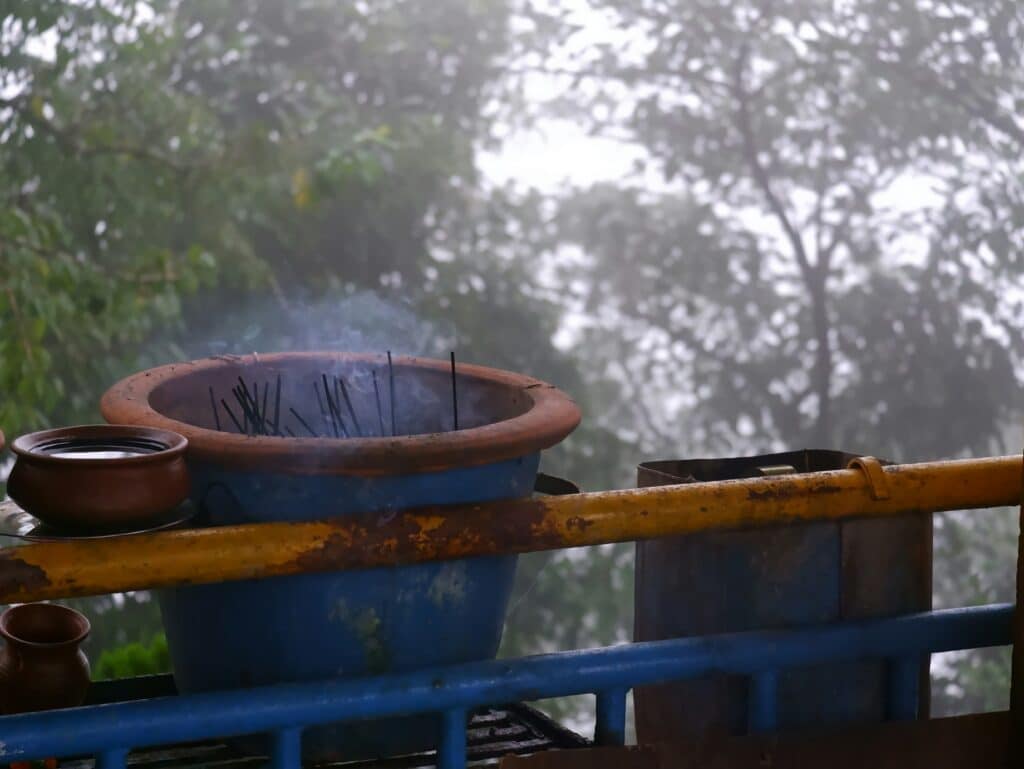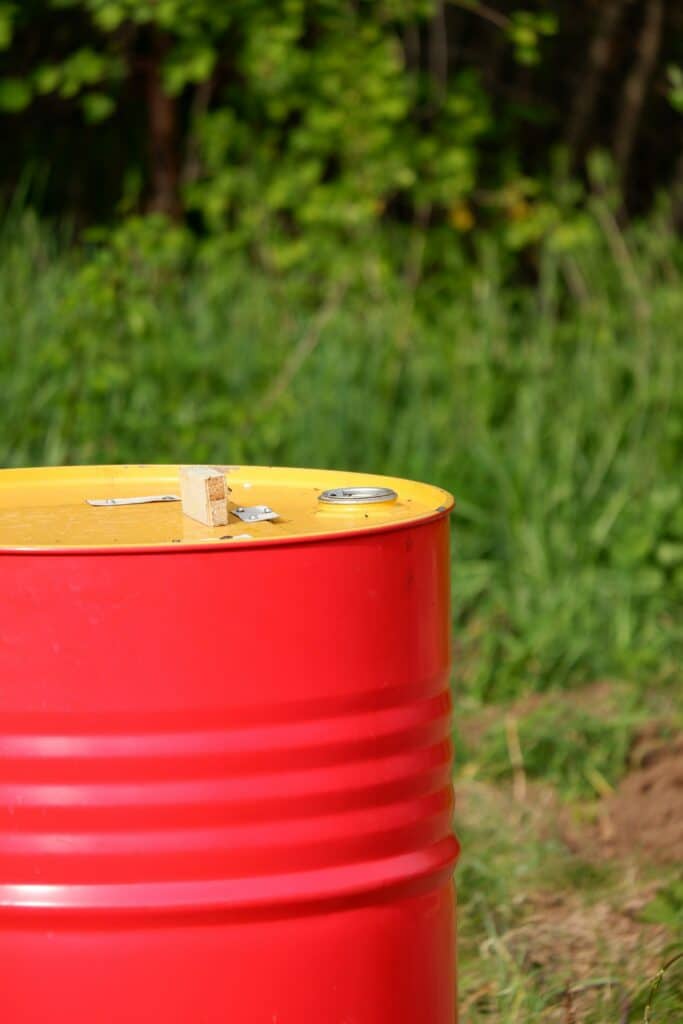
One innovative way to contribute to this crucial cause is by harnessing the power of nature itself through rainwater harvesting. More specifically, using a rainwater harvest barrel. This practice, simple yet efficient, allows us to save money on water bills while also preserving the environment by reducing the use of municipal water. A rainwater harvest barrel collects and stores rainwater directly from your roof, providing a free and sustainable water source for a variety of uses around the house. Moreover, it promotes a circular economy, further reducing our environmental footprint. In this comprehensive guide, we delve into the world of rainwater harvesting, highlighting the benefits of using a rainwater harvest barrel. From detailed explanations about how it works to practical tips for installing and maintaining your own system, we cover it all. It’s time to explore how to make the most of nature’s gift to us, and in turn, give back to the environment by saving water and money in a sustainable way. Let’s shape a greener future, one raindrop at a time. 🌎💧💰
Understanding Rainwater Harvesting
To begin with, it is crucial to understand what rainwater harvesting is and why it is important. Rainwater harvesting is a technique used for collecting, storing, and using rainwater for landscape irrigation and other uses. The method is simple and efficient, and it uses a catchment area, like a roof, and a rain barrel to collect the rainwater. Rainwater harvesting is beneficial as it reduces dependence on wells and other water systems, thus saving on water bills. Additionally, it promotes both water and energy conservation, key pillars of sustainability.
Components of a Rainwater Harvesting System
A rainwater harvesting system is a thoughtfully designed setup that captures, stores, and redistributes rainwater for various uses—primarily irrigation, cleaning, and in some cases, indoor non-potable applications. Though systems can vary in complexity, the basic structure includes five key components: catchment area, conveyance system, storage, treatment, and distribution.
Distribution: This can be as simple as a gravity-fed spigot at the base of the barrel or as complex as a pump-fed irrigation network with multiple valves and hose connections.
Catchment Area: This is typically the roof of your home, garage, or shed. The size, slope, and material of the roof influence the amount and quality of water collected. Smooth, non-toxic surfaces such as metal or tile roofs are preferred for optimal flow and cleaner water.
Conveyance System: This includes gutters, downspouts, and diverters that guide rainwater from the roof to the storage container. It’s important that this system is properly sloped and free of leaks or clogs to ensure efficient water transfer.
Storage: This is most often a rain barrel, cistern, or tank, depending on the scale of your system. It must be durable, weather-resistant, and sealed to prevent contamination and mosquito breeding.
Treatment: If the water is intended for anything beyond basic garden irrigation, some level of filtration or purification is necessary. Screens, sediment filters, first-flush diverters, or UV treatment systems can all be part of this stage.
Creating a Rainwater Harvest Barrel
Building your own rainwater harvest barrel is a cost-effective and accessible way to begin conserving water at home. Here’s a step-by-step guide to help you get started:
- Select a Barrel: Choose a barrel based on your storage needs and climate conditions. A 50- to 100-gallon plastic barrel is a common and practical option for most households. Make sure the material is food-grade and UV-resistant, especially if the water will be used on edible plants.
- Choose the Location: Your barrel should be placed under a downspout, ideally where you get the most runoff. The ground must be flat and firm, or slightly elevated with cinder blocks or a wooden platform. Elevating the barrel improves water pressure for gravity-fed use and makes the spigot more accessible.
- Prepare the Barrel:
- Install a spigot near the bottom to allow easy access to the collected water. Use waterproof sealant around the fittings to prevent leaks.
- Cut a hole at the top to insert the downspout or flexible hose, and cover the opening with a fine mesh screen to block debris, leaves, and insects.
- Add an overflow valve near the top to redirect excess water during heavy rains—this can be connected to another barrel or directed safely away from your home’s foundation.
- Install the Barrel: Position the barrel so that the downspout flows directly into it. Use adapters or downspout diverters if needed to ensure a secure and sealed connection. Once in place, test the system during the next rain to ensure everything is functioning as intended.
With proper setup and occasional maintenance, your rain barrel will provide you with a renewable, free source of water for years to come—helping you save money, protect the environment, and build resilience against water shortages.
Maintaining Your Rainwater Harvest Barrel

Proper maintenance of your rainwater harvest barrel is essential to ensure that it operates safely, efficiently, and hygienically throughout the year. Although rainwater harvesting systems are generally low-maintenance, neglecting basic care can lead to problems such as algae growth, mosquito breeding, clogged inlets, or even structural damage.
Regular cleaning of the barrel is one of the most important tasks. Algae can form inside the tank if exposed to light, particularly if the barrel is semi-transparent or not sealed correctly. To prevent this, opt for opaque barrels, keep the lid tightly closed, and clean the inside of the container every few months with a solution of water and vinegar or a mild bleach solution (if the water is not intended for edible plants).
Mosquitoes can quickly turn a water barrel into a breeding ground if the system is left open or if standing water accumulates on the surface. Use tight-fitting lids and fine mesh screens on inlet and overflow holes to keep insects out. Adding mosquito dunks made from Bacillus thuringiensis israelensis (Bti)—a natural larvicide—can further protect against infestations without harming plants.
In colder climates, disconnecting the barrel during winter months is strongly advised. Water left in the barrel can freeze, expand, and cause the plastic to crack or deform. Before the first frost, drain the barrel completely and store it upside down or in a sheltered area.
Lastly, gutter maintenance is critical. Check gutters, downspouts, and leaf screens regularly for debris, as clogged pathways will reduce water flow into your barrel and can cause overflows or backups. Keeping the system clear ensures maximum water collection during every rainfall event.
Cost and Environmental Benefits of Rainwater Harvesting
One of the most compelling reasons to invest in a rainwater harvesting system is the potential for significant cost savings. Depending on your local rainfall patterns and the size of your roof, you can collect hundreds or even thousands of gallons of water annually. This harvested water can be used for a wide range of purposes—irrigating gardens, washing vehicles, cleaning outdoor surfaces—which reduces reliance on municipal or well water supplies and lowers your monthly utility bills.
In some regions, homeowners may also be eligible for rebates, tax credits, or incentives from local governments or environmental agencies for installing water-saving infrastructure. Over time, these financial benefits can offset or even exceed the initial investment in rain barrels, diverters, and filtration systems.
Beyond economics, the environmental benefits of rainwater harvesting are profound. Collecting and reusing rainwater reduces demand on freshwater reservoirs, rivers, and aquifers, which are under growing pressure due to population growth and climate change. This is particularly important in areas prone to drought or water restrictions.
Additionally, rainwater harvesting helps manage stormwater runoff, which is a major contributor to urban flooding, soil erosion, and water pollution. By capturing rainfall where it lands, you reduce the volume and speed of runoff entering drainage systems and natural waterways.
In essence, a simple rain barrel becomes a powerful tool in the movement toward sustainable living—allowing individuals to take personal responsibility for water conservation while saving money and protecting the environment.
Other Uses for Harvested Rainwater
While watering your garden remains the most popular and accessible use for harvested rainwater, the potential applications of this free, naturally sourced water extend far beyond irrigation. In fact, with the appropriate systems in place, rainwater can serve multiple household and outdoor functions—reducing reliance on treated municipal water and helping to close the loop on personal water use.
Some of the most common alternative uses include:
- Flushing toilets: One of the most water-intensive indoor activities, toilet flushing can be entirely supported by rainwater, significantly lowering household water consumption.
- Washing cars and pets: Rainwater is typically soft, meaning it contains fewer minerals than tap water. This makes it ideal for car washing, leaving fewer spots and reducing the need for soap. Similarly, it’s gentle on pets’ skin when used for bathing.
- Laundry: With the addition of a proper filtration and purification system, rainwater can be routed to washing machines. Soft rainwater improves detergent efficiency and is less abrasive on fabrics.
- Cleaning outdoor surfaces: Rainwater collected in large storage tanks can be used for washing patios, garden tools, or windows, offering a sustainable option for all-purpose outdoor cleaning.
For indoor use, such as laundry or toilet flushing, it is essential to install a rainwater treatment or filtration system. This may include first-flush diverters, sediment filters, UV sterilization, or chlorination units, depending on your region’s health codes and intended application. Properly treated rainwater becomes a safe and reliable resource, making the household more water-independent.
Final Thoughts
While the initial setup costs for a rainwater harvesting system—such as gutters, storage barrels or tanks, and filtration units—can seem daunting, they should be viewed as a long-term investment in water security and environmental responsibility. Over time, users typically see a notable decrease in water bills, especially during peak usage seasons, such as summer months when garden irrigation and outdoor cleaning increase significantly.
More importantly, harvesting rainwater supports local and global environmental conservation. It reduces the burden on municipal water supplies and infrastructure, lowers the energy footprint associated with water treatment and transportation, and helps mitigate stormwater runoff—one of the leading causes of urban flooding and waterway pollution.
Rainwater harvesting is a practice rooted in ancient civilizations—from Roman cisterns to Indigenous catchment techniques. In modern times, it’s gaining renewed relevance in the face of climate change, population growth, and increasing demand for clean water. By installing even a simple rain barrel, individuals can take meaningful steps toward water sustainability.
In essence, rainwater harvesting is more than just a method—it’s a philosophy of stewardship. It reconnects us with natural cycles and encourages thoughtful, responsible use of resources. For anyone seeking a practical, cost-effective, and environmentally sound solution to modern water challenges, investing in a rainwater collection system is not only wise—it’s essential for a more sustainable future.
Conclusion
In conclusion, the adoption of a Rainwater Harvest Barrel presents a dual benefit – saving money and protecting the environment. It is an effective and eco-friendly solution to water scarcity, allowing us to conserve our precious resources and reduce our dependence on treated water. The practice of rainwater harvesting is a significant step towards a sustainable future, emphasizing the importance of resource management and environmental preservation. It is also cost-effective, reducing our water bills and requiring minimal maintenance. By investing in a Rainwater Harvest Barrel, we can contribute to the preservation of the environment and promote a greener lifestyle. We can transform a natural occurrence like rain into a reliable water supply. As we continue to face the challenges of climate change and increasing water scarcity, this simple yet innovative solution can make a significant difference. In essence, it’s a win-win situation; we save money while making a vital contribution to the environment. Hence, rainwater harvesting isn’t just about conservation; it’s about making a conscious effort to live sustainably. It’s about taking responsibility for our planet and its future generations. Let’s make a positive impact by adopting practices like using a Rainwater Harvest Barrel, paving the way for a more sustainable and eco-friendly future.



